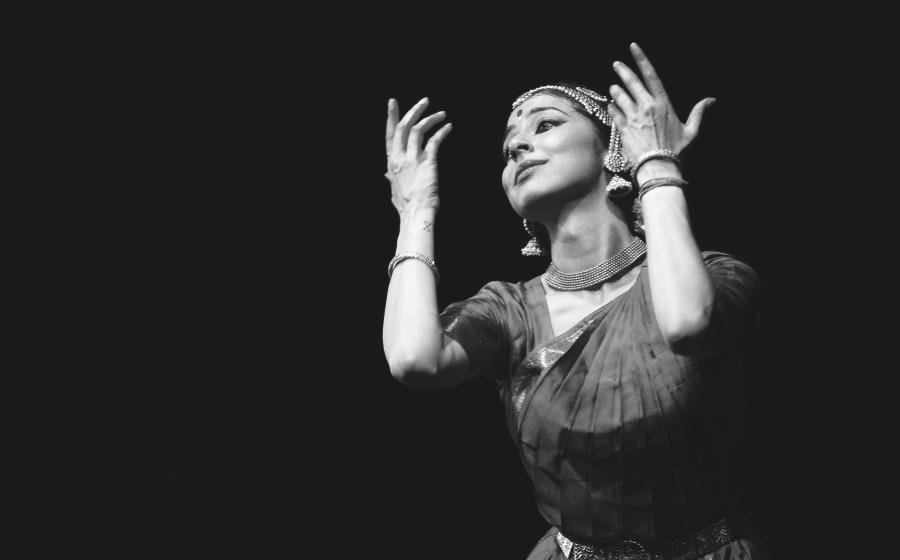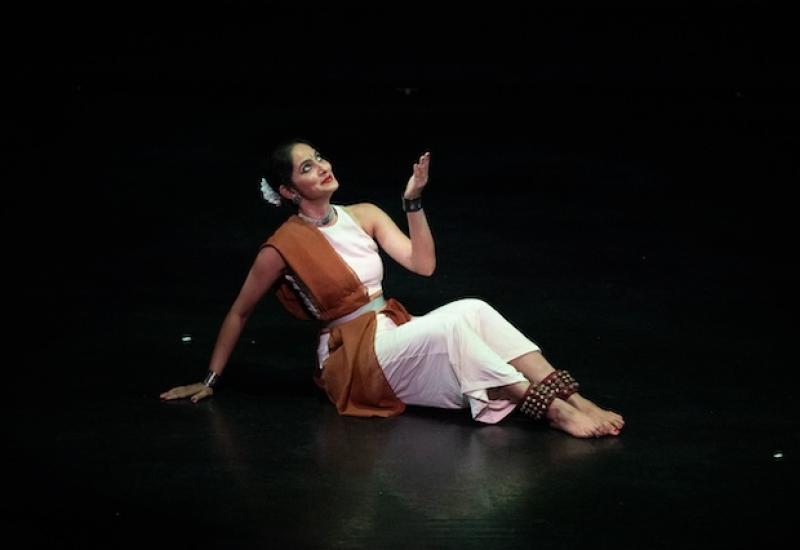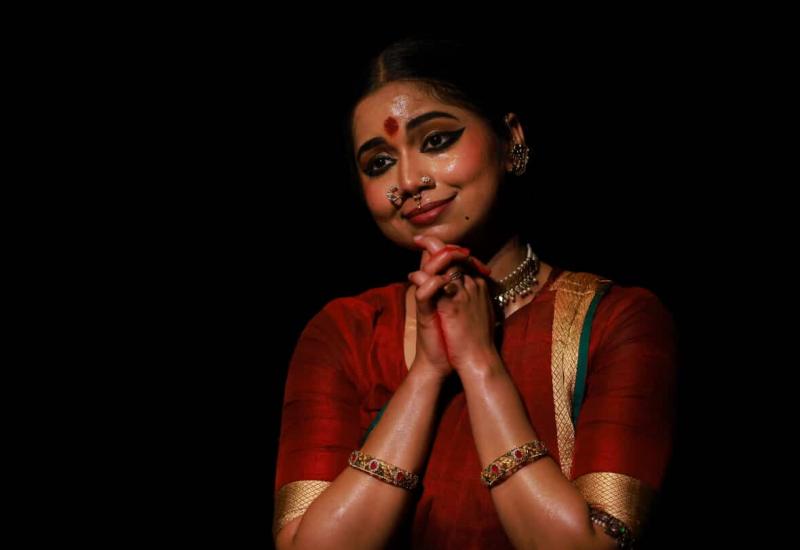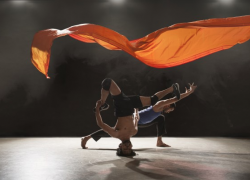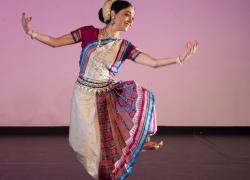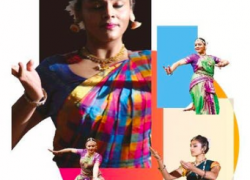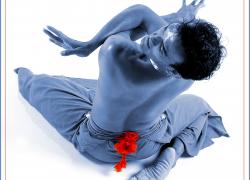Solo Bharatanatyam - Pallavi Anand
Solo Bharatanatyam –Pallavi Anand
1 July 2022
Bhavan, London
The house lights dim, the audience comes to a hush, a spotlight trains on the orchestra of four musicians. The meditative Abhogi raga clears a pathway for a hymn to the deity of exordia, Ganapati. The space thus cleansed, the recital begins.
Pallavi Anand’s solo bharatanaṭyam performance—staged at the Bhavan in London, the largest centre for Indian classical arts in the UK—opens with ‘Stuti Pancaratnam’, a collection of five verses to different Hindu deities.
Immediately, I am struck by the judiciousness of the choreography, the poetic depictions followed by even, academic jatis (non-narrative rhythmic phrases). There is something deeply satisfying to watch Pallavi respond to this classic work with unhurried precision, her lithe body cutting rather the plucky figure of a seasoned artiste; perhaps it is the Kalakshetra flavour of her technique, or it could be her equanimous face, I am reminded of a younger Leela Samson.
The first announcement ensues: ‘Tonight we present a substantial, old-school, Madras programme,’ says Mavin Khoo, international artist and current mentor to Pallavi. He expanded on the need for newer generations of dancers to trust in the wisdom of the traditional margam, the concert recital format.
Mavin is a superlative performer; his bharataṇaṭya style—while derived from that of his illustrious guru, the late Adyar K. Lakshman—is wholly his own, defying almost every convention to conjure something punchier. It is from this experience, of knowing the rules intimately that he may dispense with them, that he coaches Pallavi.
Rare are the opportunities in these parts of the world, and poor the financial gains, to base a career on the margam, and so one considers what sacrifices need to be made in this pursuit. In Pallavi’s case she gave up a burgeoning career in Fashion Design to commit full-time instead to dance, and her proficiency shows. Trained since young in bharatanaṭyam and mohiniaṭṭam by her mother, Shalini Shivashankar, as well as being variously mentored by industry professionals such as Seeta Patel (UK) and Bragha Bessel and Divya Shiva Sundar (India), Pallavi’s familiarity with the dance form is obvious from her stage-presence.
Her current relationship with Mavin—mimicking the personal and immersive dynamic of the guru-shiṣya (teacher-disciple) connection—levels her artistry up.
Mavin’s input as architect of the enterprise is writ large across the evening. He’s a demanding teacher, Pallavi admits in an interview, expecting nothing less than rigorous discipline. But he shows her too how to trust her own sensibilities, to chart her own course through the margam. 'He has taught me to soak-in the music, to allow the raga (melodic framework) to be the spine of the piece, determining everything else around it.’
And so the raga grows, like a stalk seeking the heavens, poetry and dance blooming from and around it.
Vamshikrishna Vishnudas sings the alap (improvised prologue) to the varnam (central work in the margam); his voice is pliant, rustic, unfurling shades of the Khamas raga, a dawn glinting gently over the horizon. Pallavi is spring herself: long arms entwined like plush vines, a face like a fresh blossom seeking the sun, her eyes expectant. Shringara (love) being the staple sentiment here, the nayika (protagonist) is in a duet with her absent lover, the god Shiva.
Entani ne telupudura? the Telugu verse opens. Why is it so difficult for you to understand the nature of my heart?
Guru Lakshman’s choreography is loosely-wrought, freeing up the artist to inflect 19th-century composer Subbarama Dikshitar’s lyrics in her own manner. Pallavi is all old-school charm, her abhinaya (expressive technique) understated but sure, working with and through the melodic refrain to sustain the yearning of her character.
While it is conventional for movements to illustrate words accurately, there is room too for sanchari, delineations that work through suggestion rather than statement. Longing for you, I wither, is the lament, as Pallavi paints a lush garden in which the nayika, awaiting her lover, strings flower garlands in vain. Later, a single ambrosian moment is protracted—the nayika falls into an exhausted slumber while the moon arcs overhead, her wait and wanting manifest—to engulf artist and audience alike.
If the abhinaya is chaste, then guru Lakshman’s jatis are particularly punishing, the compositions rarely coming out of the araimaṇḍi (half-seated) position. Pallavi meets each one with panache: leaps are arched like bowers; a series of tightly-coiled spins shoot like arrows; generous lunges bridge chasms across the stage; her energy is elastic and enviable.
Bharatanaṭya jatis are famously complex affairs requiring air-tight accuracy. With Mavin’s steady conducting on nattuvangam (cymbals) and solkattu (mnemonic recitations), Pallavi’s footwork bubbles like laughter between friends. And with Prathap Ramachandra playing the mṛidangam (cylindrical drum) with obvious joy, the rhythmic architecture is complete, allowing this audience member simply to marvel.
There is a tonal shift to the arcane as we segue to the padam (love poems in a slower tempo), Ghanam Krishna Iyer’s soft, expansive lyrics cloaked in the dark, heady tones of Pantuvaraḷi raga. This is early 19th-century poetry, written for the courts in rich Tamizh, a feast for any admirer of literature. It is staged modestly: Pallavi remains seated for the entirety of the work, employing the barest of hand-gestures, the slightest of glances and head tilts, a sophistication for all the many desires left unsaid. The nayika is in a tryst with her dreams, having witnessed the most exquisite love-making. Who was she, that magnificent creature in the arms of my king? The night felt an eternity, leaving me in a swell of desire, she relates to her friend.
In contrast, the aṣṭapadi (a genre of poems constructed of eight couplets) lifts us back into the major scale via the Mohana raga, with flautist Vijay Venkat playing us for kites over verdant fields and glittery rivers. Pallavi is the confidante, singing to her friend Radha: On the banks of the Jamuna yonder, by gentle breeze awaits Kṛishna garlanded in wild flowers. This is a work from the larger anthology Gita Govinda by the 12th-century mendicant Jayadeva, whose genius lies in the unabashed lyricism of words and luxurious images celebrating erotic love: Don’t be idle, abandon your noisy anklets and go to him in the night. Pallavi is made for this role, youth on her side for context: coy and cajoling, ever the loyal friend, she relishes only as required in the knowledge of pleasures to be had. Mavin’s choreographic artistry is evident here as in the previous work.
So popular is Jayadeva’s work that it is enjoyed in all manner of iterations across the Indian performing traditions. However, if there is one complaint it would be that I find Carnatic renditions of aṣṭapadis a little crisp around the edges, the lavish imagery and see-sawing Sanskrit metre requiring a more yielding treatment.
We come to the close with Papanasam Sivan’s ‘Ka va va’, a fevered plea for the grace of the Tamil hill-god Muruga. The ancient Varali raga is unsettling, snaking its way to a rumbling pitch, just as a devotee might be consumed by ardent prayer. Mavin’s choreography once again pushes at the seams, building a thunderous countenance, evoking tribal rituals offered to this southern deity. One wonders if the bharatanaṭya form may be too polite for this depiction—the more graceful characters seem a better fit for Pallavi’s comportment—but she rises to the challenge, stomping and twirling and leaping across the space in obsessive devotion. The final image is of the devotee in prone surrender to the lord, just the release needed to close the show.
Bharatanaṭyam is hedged on its visual articulacy, and it’s evident that Pallavi has worked hard to achieve this. However, beyond academic diligence there is something luxurious at hint: a mature handling of the technique, the patience to allow characters to simmer and stew, the wisdom to be simultaneously detached and completely present.
Here is a dancer who seems not in thrall with herself, who is happy to dwell alongside the dance rather than seek to extract from it. The ease and humility, the lack of self-consciousness, these are the truly enviable traits, and are sure to draw more audiences to share in her artistry. This was a stellar evening, curated with care and finesse. I walk away sated, elated by beauty.

